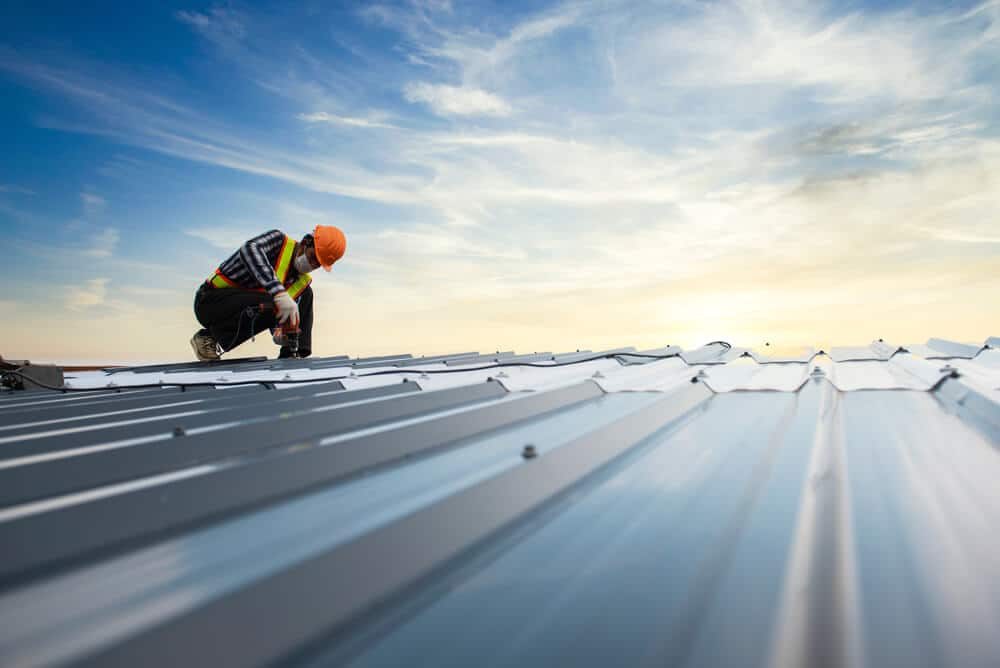Protect Your Home with Keep Dry Roofing St Peters MO's Professional Roofing Services
Protect Your Home with Keep Dry Roofing St Peters MO's Professional Roofing Services
Blog Article
Key Considerations for an Effective Roof Installation: Attaining Long Life and Efficiency
In beginning on the journey of roof covering installment, one need to prioritize crucial considerations to guarantee both durability and effectiveness. The option of materials, tailored to stand up to neighborhood environment problems, plays a pivotal role in preserving structural stability. Similarly vital is the style, which must accommodate proper water drainage and supply adequate assistance. Furthermore, taking on best practices throughout installment can dramatically mitigate possible problems such as dampness buildup and energy inadequacy. As we explore these facets, it becomes evident that an effective roof covering installation is not just regarding covering a structure yet regarding crafting a resistant and sustainable option. What are the important elements that absolutely make a distinction?
Selecting the Right Materials

Environment plays an essential duty in material selection. In areas prone to heavy rains or snow, materials like asphalt roof shingles or metal roofing with high water resistance are a good idea. Alternatively, in hot environments, products with reflective residential properties, such as trendy roof membranes or floor tiles, can help in reducing energy prices by dispersing sunlight.
Budget considerations likewise affect product selection. While premium materials like slate or clay floor tiles supply durable performance, they feature greater upfront prices. They can verify economical over time due to their marginal maintenance needs and extended life-span.
Lastly, the building style of the structure must harmonize with the roof material. Conventional homes might profit from wood tiles, whereas modern-day frameworks might opt for streamlined steel coatings. By meticulously evaluating these variables, you can pick materials that line up with both practical and visual goals.

Comprehending Roofing Layout
Recognizing roofing design is crucial in accomplishing a well-functioning and aesthetically pleasing framework. The layout of a roof influences not just the aesthetic allure yet also the structural stability and functionality of the structure. An attentively developed roof can boost the total building design while making certain reliable water drainage, insulation, and air flow.
Crucial element of roofing system design consist of the pitch, shape, and architectural support group. The pitch, or slope, determines how effectively water and debris are lost from the roofing system surface area, affecting the life-span of roofing materials. Typical roofing system forms include gable, hip, flat, and mansard, each offering distinctive benefits and aesthetic high qualities. For instance, gable roof coverings are prominent for their simpleness and reliable water shedding, while hip roofs provide extraordinary stability in high wind locations.
Structural support systems, such as trusses and rafters, are essential in dispersing weight and keeping the roof site covering's honesty. Proper design ensures that the roofing can withstand environmental tons and stand up to contortion. Furthermore, incorporating attributes like overhangs and eaves can protect the building's frontage and improve energy effectiveness by giving shade and minimizing warm gain.
Eventually, a well-considered roof layout balances develop, function, and resilience, adding to the long-term success of the installation.
Climate Considerations

In hot and warm climates, roof products have to reflect, instead of absorb, solar warm to maintain power effectiveness and protect against too much thermal expansion, which can bring about product deterioration - Keep Dry Roofing St Peters MO. On the other hand, in chillier areas, materials need to give appropriate insulation to avoid heat loss and endure freeze-thaw cycles that can create splitting and other architectural concerns
Furthermore, the option of shade and finish can substantially impact a roofing system's thermal efficiency, particularly in areas with extreme temperature level variations. Regional structure codes typically provide assistance on suitable materials and layouts, reflecting local climate problems. A comprehensive understanding of climatic problems is crucial for choosing products and designs that make certain a roof's optimal performance over its life expectancy.
Installment Best Practices
Reliable roof installation is an important component of guaranteeing long-lasting toughness and performance. Using Web Site top quality roof shingles, underlayment, and flashing tailored to the details environment and building design will enhance the roofing's durability.
Similarly crucial is the prep work of the roof covering deck. Making sure that the deck is clean, completely dry, and structurally sound before setup avoids problems such as leaks and early wear. Proper air flow is an additional essential factor to consider, as it alleviates moisture accumulation and thermal tension, thus lengthening the roof covering's lifespan.
Precision in measurement and placement throughout the setup process is essential. This includes exact positioning of roof shingles and precise interest to overlapping, which prevents water ingress. Using specialist, proficient labor ensures these standards are met, reducing the danger of errors that might jeopardize the roof's effectiveness.
Energy Performance Techniques
Enhancing a roof's energy performance is a calculated factor to consider for reducing energy prices and ecological effect. By selecting suitable products and technologies, homeowners and building contractors can significantly boost the thermal efficiency of a roof, therefore minimizing energy usage.
Furthermore, the consolidation of sufficient insulation is critical in preventing warm transfer in between the interior and exterior of a structure. Insulation products with high R-values, such as spray foam or rigid foam boards, work in preserving a consistent interior temperature, therefore maximizing cooling and heating system effectiveness.
Furthermore, the combination of photovoltaic panels on roofs not only creates renewable resource yet can additionally supply color, more decreasing warmth gain (Keep Dry Roofing St Peters MO). Developments like awesome roofs, which utilize coverings to show more sunshine, are additionally gaining appeal for their capacity to decrease roofing temperatures
Final Thought
Finally, attaining an effective roof covering installation demands a comprehensive method that incorporates the choice of high-quality materials customized to certain weather problems, thoughtful design considerations for optimum drain and architectural honesty, and adherence to precise installment practices. read more These aspects collectively make certain the avoidance of dampness buildup and thermal stress, consequently improving the roofing's resilience and effectiveness. Including approaches to enhance energy effectiveness additionally adds to lowering maintenance needs and reducing energy usage over the roofing's life-span.
Report this page